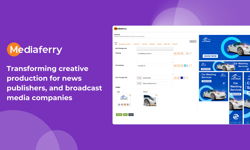
For better or worse, media agencies use advertising revenue as a proxy for advertiser demand. Thus, global digital advertising spend was $198bn in 2017 and we expect this to have grown 12 per cent in 2018 to reach $221bn, and by another 10 per cent in 2019 to reach $243bn. This would bring digital’s share of global ad investment to 39 per cent in 2018, then 42 per cent in 2019. Digital advertising will account for 95 per cent of net new global advertising growth in 2018 and 99 per cent in 2019.
Arguably the most impressive recent digital superlative has been the growth in Facebook’s market share. Using our own estimates of global digital ad investment excluding China, where it is banned, Facebook’s share grew from 16 per cent in 2015 to 30 per cent in 2017 – and in 2017, it accounted for more market growth than Google. Google’s ex-China share rose from 48 per cent to 55 per cent. These two are ‘locomotives’ which grow the market, but also deplete many smaller long-established digital publishers / media vendors.
We estimate the big agencies handle about a quarter of digital ad investment. Large advertisers buying without agencies – mostly e-commerce ‘endemics’ – might account for another five-10 per cent. The remainder is the long tail of self-serve advertisers too small to use agencies.
Digital media made advertising possible for many, and indeed brought many into existence. The long tail accounts for more than its share of new demand for digital advertising. This becomes more evident as larger advertisers are more likely to baulk at the rising risk, price and clutter inherent to a saturating market.
The digital advertising market has several characteristics likely to reinforce price inflation. Privacy and brand safety restrict ethical inventory. Header bidding and sellers moving from second- to first-price auction tend to realise higher prices. Having fewer points of external reference, the long tail is less price-sensitive.
Self-service, especially Facebook’s, encourages large advertisers to replace big single campaigns with many shorter, smaller ones, making it less likely they will attract sufficient research support to measure branding intangibles. This encourages a focus on tangibles, and thus short-termism.
From this, it is a short step to running one’s whole business on the basis of the advertising cost of sales, disregarding the net present value of brand investment. This pathology may be rational, but proof of this is surprisingly scarce. It certainly suits the vendors, because it means the market runs on their rules.
A damaged advertising medium?
Well-publicised problems have barely affected digital’s growth trajectory. In the UK, social media platforms such as Facebook, Instagram, Twitter, Snap and Google’s YouTube were on track to capture about £3.3bn, or 25 per cent, of all digital media budgets in 2018, of which Facebook was expected to take about half. This represented growth of 24 per cent year-on-year.
Social networks offer advertisers impressive technical reach. In the UK, 40m, or 60 per cent of the population, are active on social media. Advertisers worry about the young turning away from traditional media, and social media is a ready replacement. Facebook itself is hardly immune to the changing habits and preferences of the young. Advertisers monitor the ageing profile of the Facebook brand, which Facebook Inc cleverly anticipated by acquiring Instagram and aping Snapchat.
We do not know as much about the quality of digital reach as we are used to in other media. ‘Walled gardens’ do not disclose their natural usage patterns, perhaps fearing this would reveal, for example, 20 per cent of users account for 80 per cent of usage. Then there is dwell time: for example, you will be charged if only a single pixel of your Facebook video loads. And by definition, these walled gardens generally resist third-party verification unless they control it.
YouTube faced considerable obstacles in 2016-2018, mainly adjacency issues of brand advertising placed around inappropriate or illegal content. Automatic filters are not perfect, whether missing harmful context, or blocking good context such as journalism dealing with unsavoury subjects. Many larger advertisers paused their YouTube investment, but we think YouTube revenues continued growing throughout, despite that. Advertisers using YouTube for paid search avoid adjacency problems because they are bidding on keywords. Search comprises the majority of our own business with YouTube.
It is said about one in 20 Britons deleted their Facebook accounts after the Cambridge Analytica scandal, but it’s likely many have since returned. Users arrange much of their digital worlds within Facebook's walled garden, from consuming news content to buying clothes, like a portal in the ‘olden days’.
Facebook and YouTube still have work to do. Trust between them across consumers and advertisers has been damaged, but not irrevocably. Users of social media are now more aware they are party to a value exchange, responsible for setting their own limits, and entitled to expect that any data harvested is handled responsibly and openly.
The introduction of GDPR in 2018 underlined that year as the year consumers were encouraged to become conscious that the digital trails they leave represent both risk and reward. The ability to reach an audience with high levels of intelligence and targeting is hugely valuable to advertisers. Facebook has the unique ability to connect usage on different devices to individual profiles, offering advertisers credible cross-device activation.
Facebook allows advertisers to analyse post-impression audience behaviour on Facebook-defined audiences in the Facebook domain, and allows advertisers to build new audience profiles from this. It does not however allow detailed information to leave its walls to be analysed or ‘ingested’ elsewhere. All it allows is aggregations, which may not reveal as much as the advertiser hoped.
The affects of brand safety considerations
Digital advertisers have become more concerned about audience delivery and less about environment or quality of content, hand-in-hand with the rise of blind programmatic buying, complicated supply chains and less and less transparency. We have seen intermediaries adding little or no value to transactions, but extracting huge undisclosed fees for their trouble. Advertisers should only invest where digital advertising has a real opportunity to be seen, by a person, within the right target audience, in compliance with data protection regulations, and in an appropriate editorial environment – noting neither premium nor quality guarantees brand safety.
We help advertisers assess their risk appetite and from this devise strategy and mitigation.
Executing brand safety entails all elements of digital media quality (ad blocking, ad fraud, contextual placement and viewability) and data protection (both client and consumer), using technology, tools and buying models.
There is never a 100 per cent safe solution, and any promises of such merit scrutiny. Strategy must therefore include cures and countermeasures for brand safety emergencies. Brand safety is but one risk attending digital media. Less obvious others are that over-specialisation impairs objectivity, or that the chain of command lacks capacity for or otherwise discourages critical scrutiny of such as objective setting, opportunity cost or cost / benefit analysis.
The importance of quality media environments
In mid-2017, GroupM began a collaboration with Newsworks, the marketing body for the UK’s national newspaper brands, to see if there was a positive correlation between the quality of the environment in which ads are delivered and the impact on brand metrics. The research took in more than 400m exposures to 84 digital advertising campaigns across nine months in all categories, generating more than 80,000 survey responses. Metrics and Cint (an online insight marketplace researcher) independently tracked evidence including brand awareness, ad recall, brand perception and recommendation intent. The aim was to identify the most positive impacts on digital ad campaigns and demonstrate the effect of premium inventory, delivered in a quality environment, against a control of inventory acquired from blind networks.
Eighty two per cent of ads in the premium inventory bought directly from media owners were seen compared with 52 per cent from networks, or 33 per cent if one insisted on third-party validation. Premium environments make ads stand out much better too: 42 per cent more likely to be delivered fully in view, 63 per cent more likely to be delivered better than 50 per cent in view, 58 per cent more likely to be in view for more than five seconds, 98 per cent more likely to be delivered above the fold and if not, then 165 per cent more likely to be brought into view by the user.
Advertisers would attach no value to a poster with half missing or a 30-second TV spot played out for only two seconds. Yet these pass for billable impressions in digital. It’s a status quo, which suits tech platforms and discriminates against premium environments in which users have greater engagement with content. Buyer, beware.
Does viewability matter?
Some companies claim two seconds of a video ad delivers half of the impact of an ad viewed in full. Two seconds is an arbitrary cut-off validated by spurious, if well-intentioned, industry standards. It is no surprise to learn that research cannot back this up, convenient though it would be for tech and social platforms and for user-generated content and for environments where users are not fully engaged, in which users scroll through huge columns of content that barely detains them. It is said these columns can be the height of Big Ben, or even the Empire State Building, but in any case, they are filled with ads, hardly any of which are actually seen, but for which advertisers have often paid.
Our Newsworks research revealed that fully in-view ads delivered a seven per cent uplift in brand awareness and eight per cent on recall compared to ads not fully in view. If an ad was in view for at least five seconds, the uplift was six per cent and eight per cent respectively. Above-the-fold vs below-the-fold supplied an uplift of five per cent on brand awareness and 14 per cent on ad recall. The best brand tracking uplifts came from ads that were 100 per cent in view for over five seconds, and above the fold, and in view for 30 seconds or more.
GroupM and Newsworks wanted to find out whether premium inventory can provide greater value for clients in improving brand metrics – and the research discovered that uplifts on premium inventory beat the control on all measured categories. They were 10 per cent better on brand awareness, nearly 20 per cent for ad recall, 10 per cent for brand perception and recommendations: double-digit uplifts for all criteria.
The future
Digital media management is surprisingly labour-intensive: to many, an optimiser still means a human rather than a machine. Workflow automation, with the goal of faster decision-making, is vital to liberate labour for higher-value tasks, and there is not nearly enough of it. The more common approach has been to look for cheaper labour.
It is fashionable to argue consumer goods brands should develop direct-to-consumer communications. It is however hard even just to tag websites. Very few advertisers can yet manage this dynamically. The technology exists, but the data is siloed. Netflix is perhaps the best example. The question whether mass personalisation is worth the effort is therefore still unanswered, but its value is likely to rise as high-quality audience touchpoints grow more elusive or expensive.
Most people will agree that advertisers and buyers are operating in a murky world, in which long, complicated and costly supply chains marginalise publishers, the sole creators of fundamental value. GroupM is therefore calling on the premium publishers – companies that create content employing professionally trained and qualified journalists, which operate under strict regulation for what can and cannot be published – to join together and provide viable alternative ways of creating value for advertisers.
This article is taken from the recently published book Anti-Social Media? The Impact on Journalism and Society, edited by John Mair, Tor Clark, Neil Fowler, Ray Snoddy and Richard Tait.
Published by: Abramis
ISBN: 9781845497293












